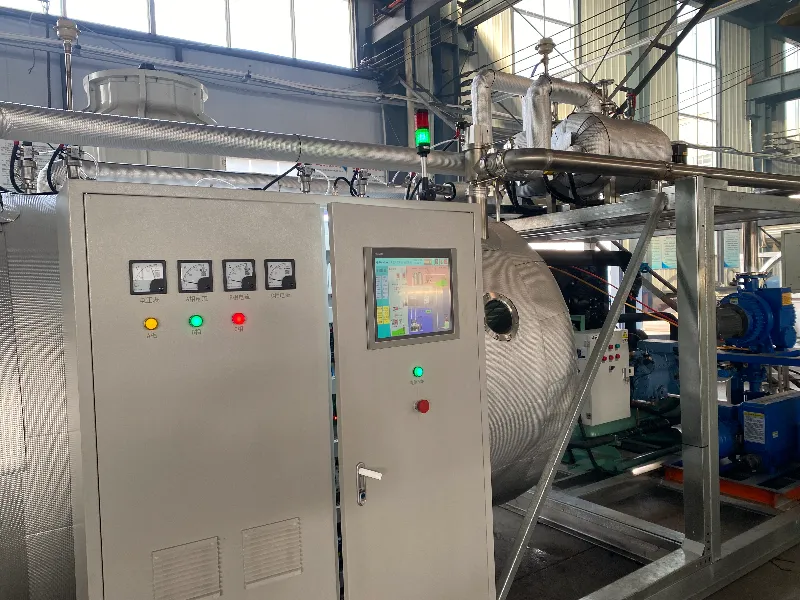Table of Contents
Freeze Dryer Temperature & Setup: Complete Technical Guide

Freeze drying is a science-driven process that relies on precise freeze dryer temperature control and proper setup to ensure optimal results. Whether you’re preserving food, pharmaceuticals, or lab samples, understanding the technical requirements is key. Below, we break down critical parameters, setup best practices, and how home models compare to industrial units.
Critical Freeze Dryer Parameters
1. Temperature: How Cold Does a Freeze Dryer Get?
Freeze dryers operate at extremely low temperatures to enable sublimation (ice → vapor):
Pre-Freezing Phase: -30°C to -50°C to solidify materials.
Condenser Temperature: As low as -80°C (industrial models) to trap vaporized moisture.
Shelf Heating: Gradually raised to 20°C–40°C during secondary drying.
Industrial units often achieve colder condenser temps (-80°C) for faster drying, while home models typically reach -50°C.
2. Vacuum Pressure
A vacuum pump reduces chamber pressure to 0.1–0.3 mBar, lowering the freezing point of ice and enabling sublimation. Weak vacuum pressure slows drying and risks ice melt.
3. Moisture Removal Rate
Depends on:
Material thickness.
Initial moisture content.
Vacuum strength and condenser efficiency.
Freeze Dryer Setup Checklist
Proper freeze dryer setup ensures safety, efficiency, and longevity. Follow these steps:
1. Space Requirements
Home Models: At least 2 ft x 2 ft of floor space .
Industrial Models: 10+ sq ft, often floor-mounted.
Clearance: Leave 6–12 inches around the unit for airflow.
2. Ventilation Needs
Place in a cool, dry area (avoid direct sunlight or humidity).
Ensure the condenser exhaust has space to dissipate heat.
3. Power Supply
Home units: Standard 110V outlet.
Industrial units: Often require 220V or three-phase power.
4. Maintenance Tips
Daily: Clean trays and check for ice buildup.
Monthly: Defrost the condenser.
Annually: Replace vacuum pump oil and inspect seals.
Home Freeze Dryers vs Industrial Models
| Feature | Home Freeze Dryers | Industrial Freeze Dryers |
|---|---|---|
| Temperature Range | -50°C (condenser) | -80°C (condenser) |
| Vacuum Strength | 0.5–0.6 mBar | 0.1–0.2 mBar |
| Capacity | 5–20 kg per batch | 50kg-3000kg per batch |
| Cost | 2,000–5,000 | 20,000–500,000+ |
| Automation | Basic settings | Programmable cycles, data logging |
| Use Cases | Home food storage, small batches | Pharma, bulk food, research labs |
When to Choose a Home Model:
Budget-friendly preservation of meals, fruits, or pet food.
Low-volume use (1–2 batches per week).
When to Choose an Industrial Model:
Large-scale production (e.g., vaccines, coffee, military rations).
Precision-critical applications (e.g., APIs, diagnostic reagents).
Optimizing Freeze Dryer Performance
Pre-Freeze Materials: Speed up the process by pre-freezing food or samples in a deep freezer.
Slice Uniformly: Thin, even slices dry faster and more evenly.
Avoid Overloading: Leave space between items for vapor flow.
Final Thoughts
Mastering freeze dryer temperature settings and setup protocols ensures efficient, high-quality results. Home models offer convenience for personal use, while industrial units deliver precision for critical applications. By following this guide, you’ll maximize shelf life, retain nutrients, and avoid costly errors.
For Detailed Configuration:
To access complete operational parameters, temperature profiles, and ISO-compliant procedures, request the full technical manual through your regional account manager or contact our technical support team at [email protected].
